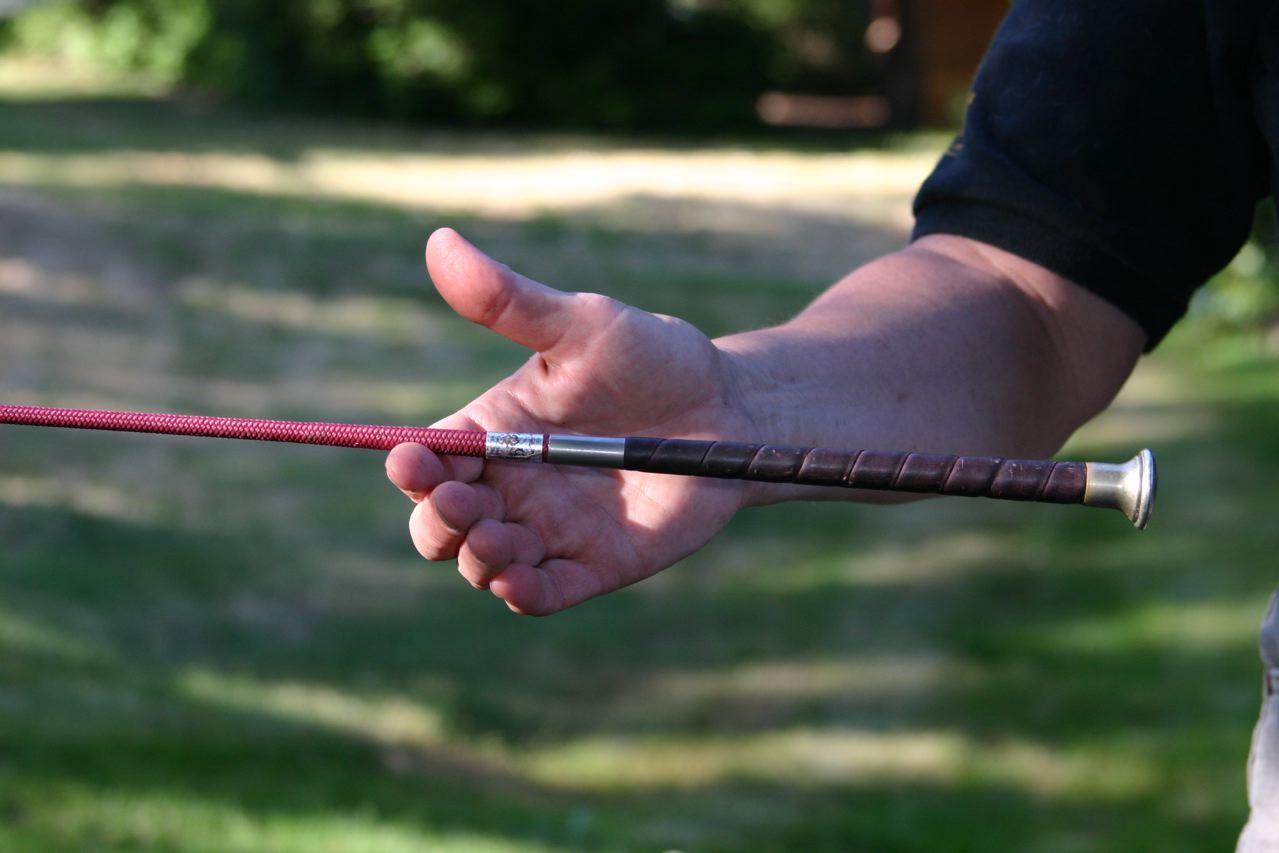Do you unconsciously choke up on the handle of your dressage whip when you ride? Does your whip hand feel stiffer than your other hand? Do you tense your thumb and pinky finger in order to keep your whip resting on your thigh? Do you have trouble correctly timing your whip aids to the horse’s movement or pull on the rein when you use your whip? A poorly balanced whip may cause all these issues. The solution is in finding a well-balanced whip. In this Murdoch Minute, I am going to show you how to test your whip and if necessary, how you can balance it yourself for riding.
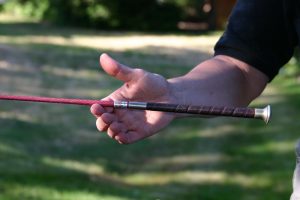
It may feel normal to you to choke up (hold the whip below the handle) or grip your whip handle. However, a well-balanced dressage whip does not require any effort to hold with your reins. A well-balanced whip will rest without tension at a 45-degree angle across your thigh when held at its full length. The button of a properly balanced dressage whip sits in the crotch of your thumb and forefinger when your hands are softly closed on the reins. Therefore the well-balanced whip is not held but rests in your hand.
Using a balanced whip requires very little effort. The lack of grip improves the quality of your whip aids, which can become refined and light. There is less chance of pulling on the rein when you use your whip because of the reduced effort to hold it. A quick flick of the wrist or squeeze of your pinky well timed will be enough to aid your horse. It may seem like a little thing but when you are looking at performance all these little things add up.
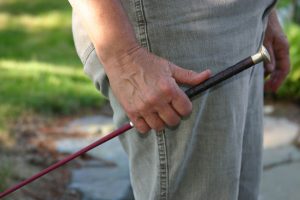
To test your dressage whip for balance, hold the whip horizontal to the ground by the handle with one hand. Slide the index finger of your other hand down the whip starting from the handle end. At the balance point, the whip will rest on your index finger without falling one way or the other. This locates the center of gravity of the whip. The distance from the end of the handle to the balance point tells you how much you will have to choke up on the whip before it balances in your hand when riding. If the balance point is close to the handle then the whip will rest in your hand. If not, you will have to grip.
Next, stand up and hold the whip from the top of the handle in a riding position, 45 degrees to your thigh. How much effort does it take to have the whip at this angle? Do you have to stiffen your wrist or use your thumb to keep the whip from dropping vertically from your hand? How much do you have to choke up on the whip to have it sit at a 45-degree angle? This will correspond to the balance point of the whip you discovered with your index finger.
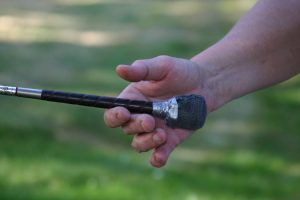
After determining the balance point of the whip you will know if your whip is well balanced. If not you will need to add some weight to the button end of the whip to balance it. We used some washers and large nuts from the workshop. It may not look pretty but it did the trick. We used vet wrap and duck tape to keep the weights in place. Hopefully, you will be more creative in weighting the knob of your whip and making it look nice! Once you have weighted your whip you no longer need to grip your whip to carry it.
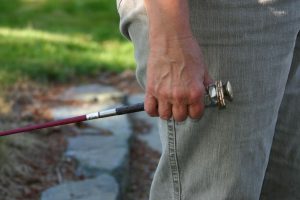
Use the Murdoch Minute to take the work out of holding your whip when riding. A balanced whip allows you to have better contact through the rein and more accurate whip aids. This will improve both your timing and your horse’s performance. And remember – enjoy the ride!
Copyright© 2007. All rights reserved.

